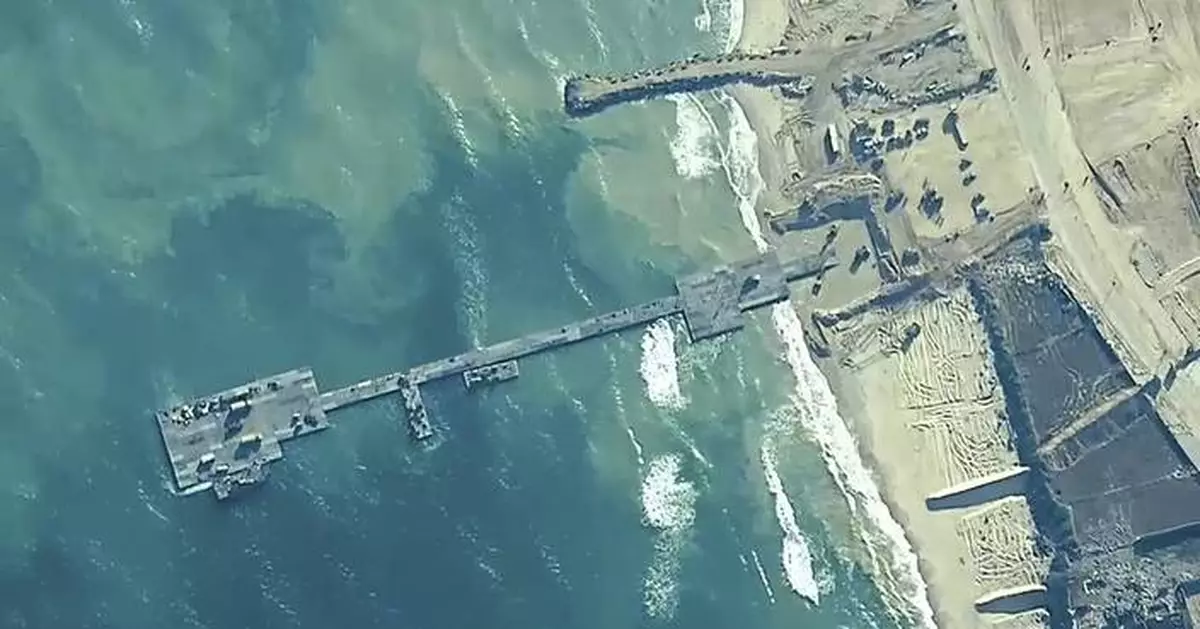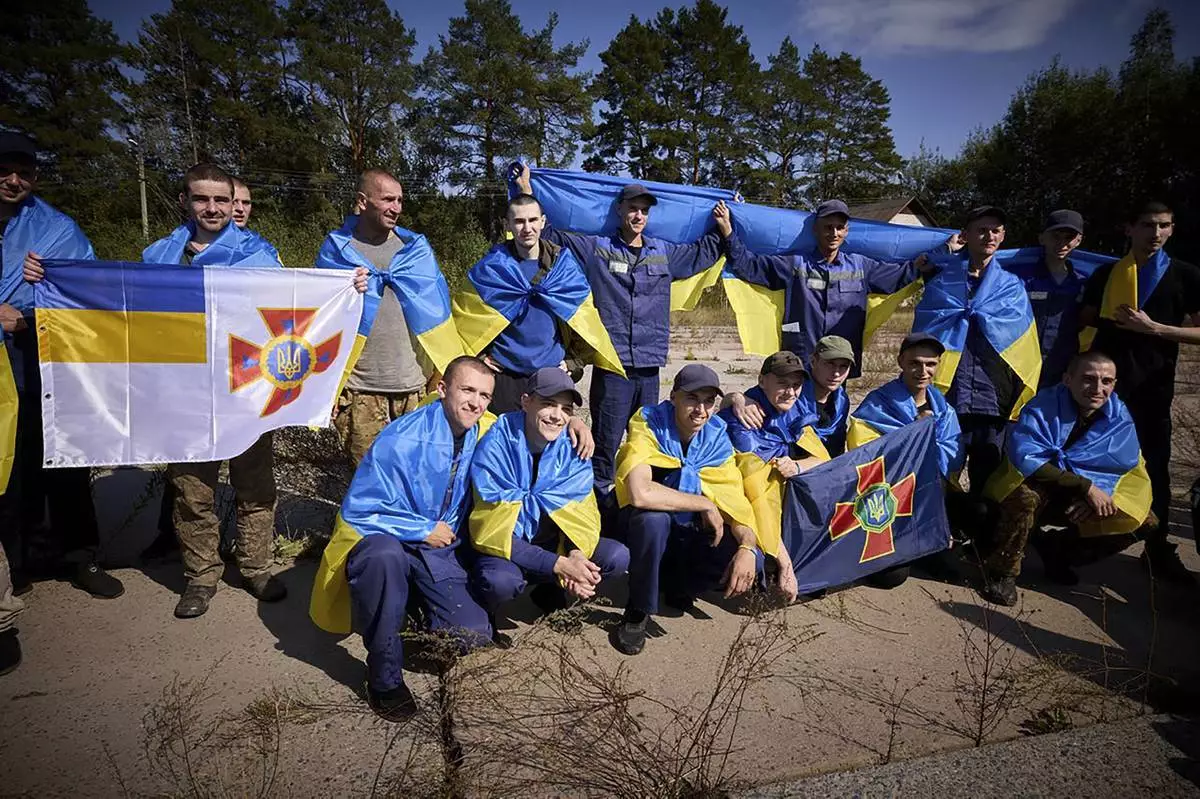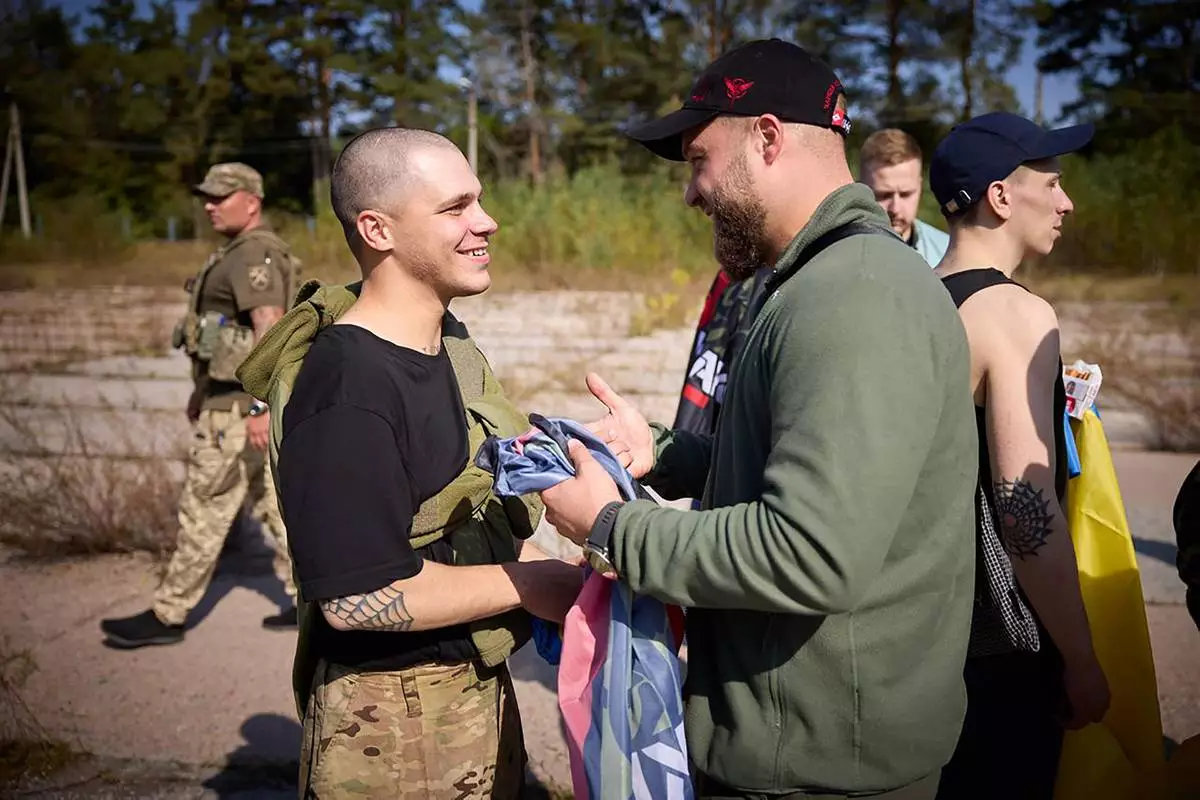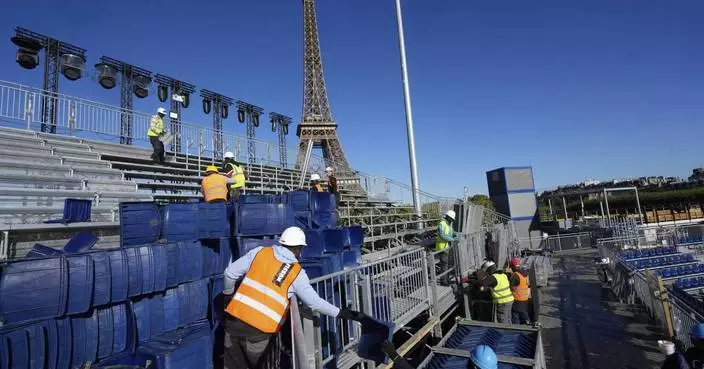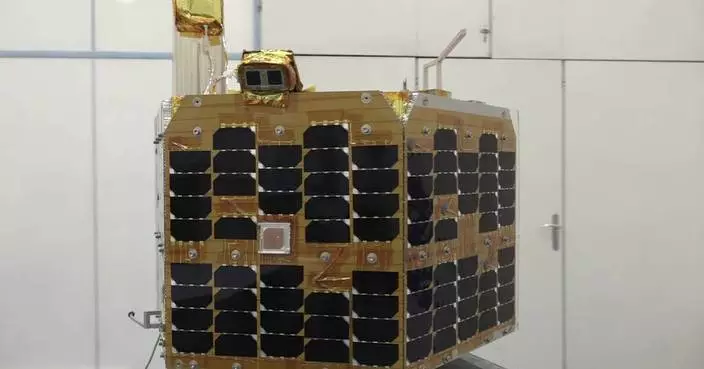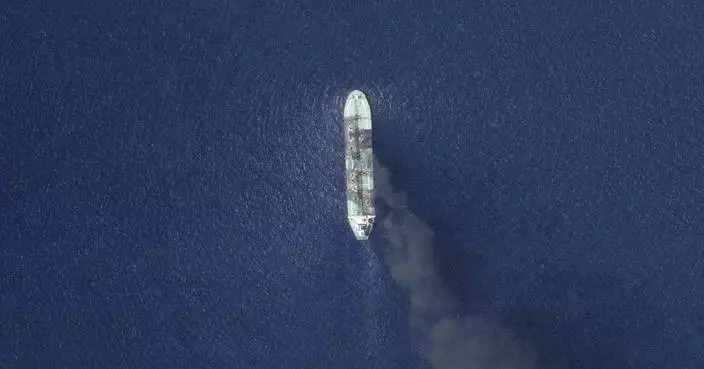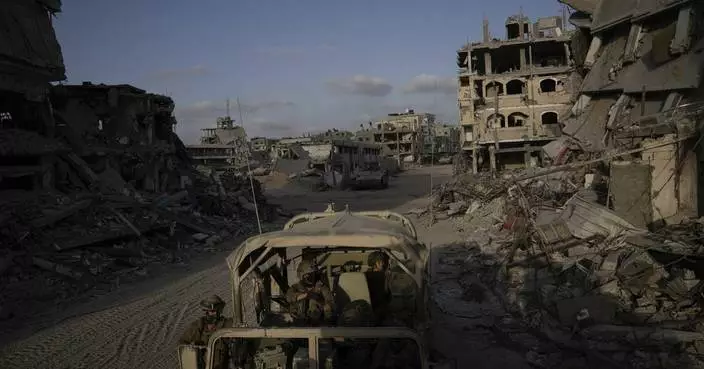WASHINGTON (AP) — It was their most challenging mission.
U.S. Army soldiers in the 7th Transportation Brigade had previously set up a pier during training and in exercises overseas but never had dealt with the wild combination of turbulent weather, security threats and sweeping personnel restrictions that surrounded the Gaza humanitarian aid project.
Designed as a temporary solution to get badly needed food and supplies to desperate Palestinians, the so-called Joint Logistics Over-the-Shore system, or JLOTS, faced a series of setbacks over the spring and summer. It managed to send more than 20 million tons of aid ashore for people in Gaza facing famine during the Israel-Hamas war.
Service members struggled with what Col. Sam Miller, who was commander during the project, called the biggest “organizational leadership challenge” he had ever experienced.
Speaking to The Associated Press after much of the unit returned home, Miller said the Army learned a number of lessons during the four-month mission. It began when President Joe Biden’s announced in his State of the Union speech in March that the pier would be built and lasted through July 17, when the Pentagon formally declared that the mission was over and the pier was being permanently dismantled.
The Army is reviewing the $230 million pier operation and what it learned from the experience. One of the takeaways, according to a senior Army official, is that the unit needs to train under more challenging conditions to be better prepared for bad weather and other security issues it faced. The official spoke on condition of anonymity because assessments of the pier project have not been publicly released.
In a report released this week, the inspector general for the U.S. Agency for International Development said Biden ordered the pier's construction even as USAID staffers expressed concerns that it would be difficult and undercut a push to persuade Israel to open “more efficient” land crossings to get food into Gaza.
The Defense Department said the pier “achieved its goal of providing an additive means of delivering high volumes of humanitarian aid to the people of Gaza to help address the acute humanitarian crisis.” The U.S. military knew from the outset “there would be challenges as part of this in this complex emergency,” the statement added.
The Biden administration had set a goal of the U.S. sea route and pier providing food to feed 1.5 million people for 90 days. It fell short, bringing in enough to feed about 450,000 people for a month before shutting down, the USAID inspector general's report said.
The Defense Department’s watchdog also is doing an evaluation of the project.
Army soldiers often must conduct their exercises under difficult conditions designed to replicate war. Learning from the Gaza project — which was the first time the Army set up a pier in actual combat conditions — leaders say they need to find ways to make the training even more challenging.
One of the biggest difficulties of the Gaza pier mission was that no U.S. troops could step ashore — a requirement set by Biden. Instead, U.S service members were scattered across a floating city of more than 20 ships and platforms miles offshore that had to have food, water, beds, medical care and communications.
Every day, said Miller, there were as many as 1,000 trips that troops and other personnel made from ship to boat to pier to port and back.
“We were moving personnel around the sea and up to the Trident pier on a constant basis,” Miller said. “And every day, there was probably about a thousand movements taking place, which is quite challenging, especially when you have sea conditions that you have to manage.”
Military leaders, he said, had to plan three or four days ahead to ensure they had everything they needed because the trip from the pier to their “safe haven” at Israel's port of Ashdod was about 30 nautical miles.
The trip over and back could take up to 12 hours, in part because the Army had to sail about 5 miles out to sea between Ashdod and the pier to stay a safe distance from shore as they passed Gaza City, Miller said.
Normally, Miller said, when the Army establishes a pier, the unit sets up a command onshore, making it much easier to store and access supplies and equipment or gather troops to lay out orders for the day.
While his command headquarters was on the U.S. military ship Roy P. Benavidez, Miller said he was constantly moving with his key aides to the various ships and the pier.
“I slept and ate on every platform out there,” he said.
The U.S. Army official concurred that a lot of unexpected logistical issues came up that a pier operation may not usually include.
Because the ships had to use the Ashdod port and a number of civilian workers under terms of the mission, contracts had to be negotiated and written. Agreements had to be worked out so vessels could dock, and workers needed to be hired for tasks that troops couldn't do, including moving aid onto the shore.
Communications were a struggle.
“Some of our systems on the watercraft can be somewhat slower with bandwidth, and you’re not able to get up to the classified level,” Miller said.
He said he used a huge spreadsheet to keep track of all the ships and floating platforms, hundreds of personnel and the movement of millions of tons of aid from Cyprus to the Gaza shore.
When bad weather broke the pier apart, they had to set up ways to get the pieces moved to Ashdod and repaired. Over time, he said, they were able to hire more tugs to help move sections of the pier more quickly.
Some of the pier's biggest problems — including the initial reluctance of aid agencies to distribute supplies throughout Gaza and later safety concerns from the violence — may not apply in other operations where troops may be quickly setting up a pier to get military forces ashore for an assault or disaster response.
“There’s tons of training value and experience that every one of the soldiers, sailors and others got out of this,” Miller said. "There’s going to be other places in the world that may have similar things, but they won’t be as tough as the things that we just went through.”
When the time comes, he said, “we’re going to be much better at doing this type of thing.”
One bit of information could have given the military a better heads-up about the heavy seas that would routinely hammer the pier. Turns out, said the Army official, there was a Gaza surf club, and its headquarters was near where they built the pier.
That "may be an indicator that the waves there were big,” the official said.
AP writers Tara Copp and Ellen Knickmeyer in Washington contributed.
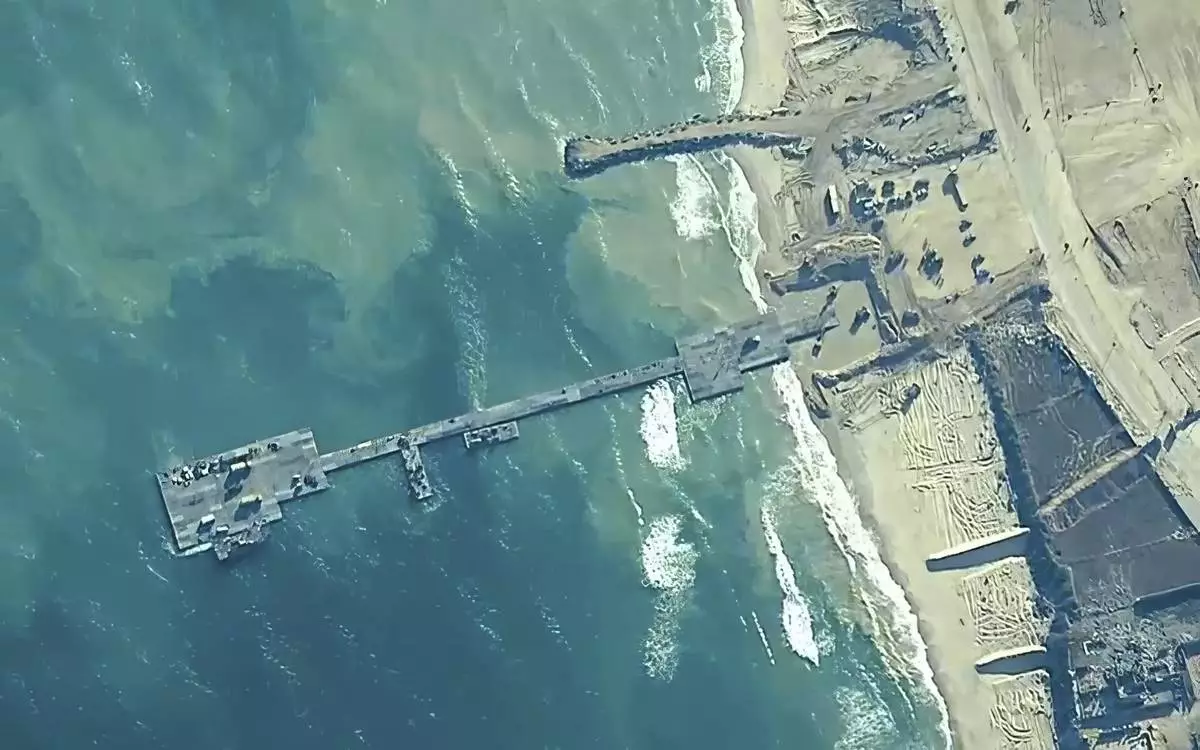
FILE - The image provided by U.S, Central Command, shows U.S. Army soldiers assigned to the 7th Transportation Brigade (Expeditionary), U.S. Navy sailors assigned to Amphibious Construction Battalion 1, and Israel Defense Forces placing the Trident Pier on the coast of Gaza Strip on May 16, 2024. (U.S. Central Command via AP, File)


